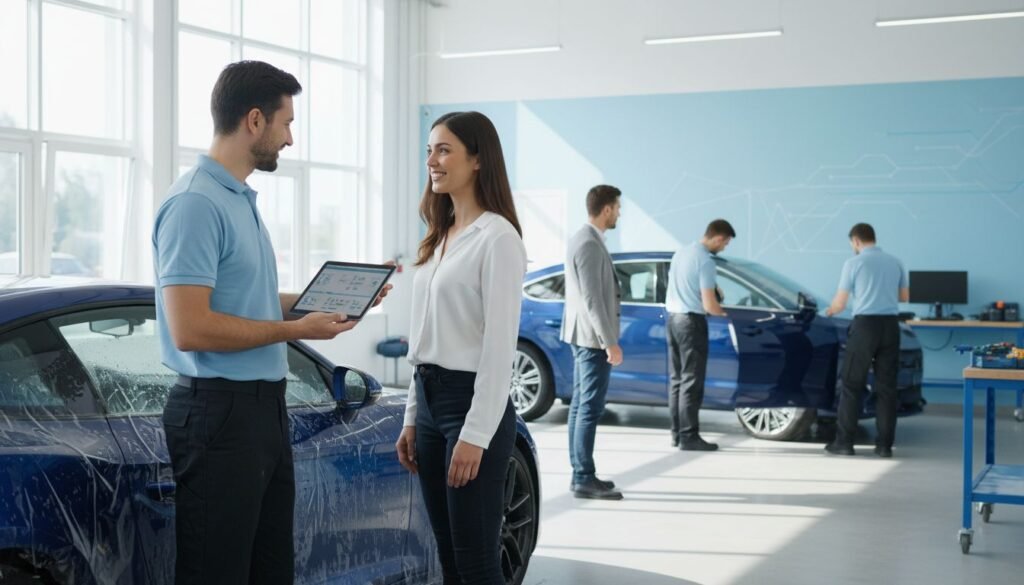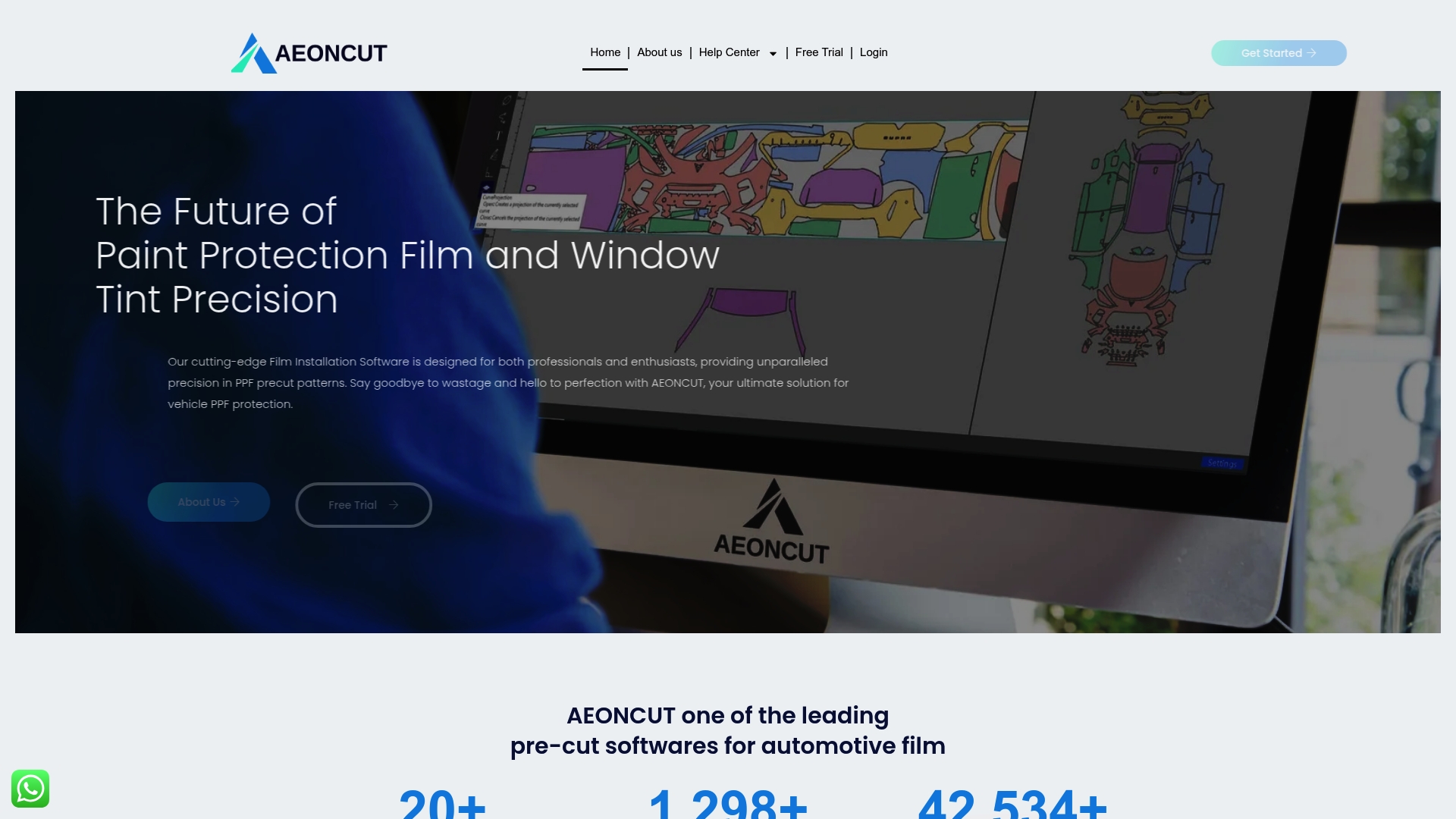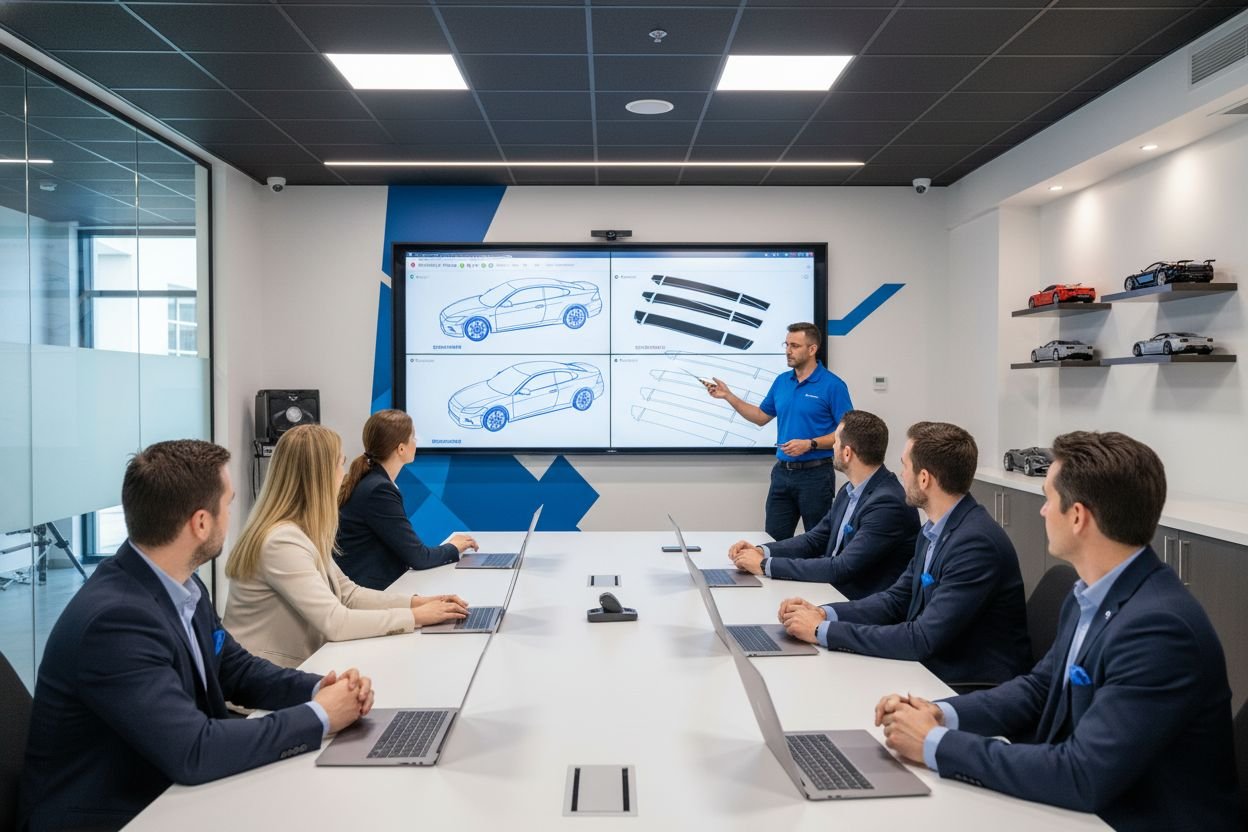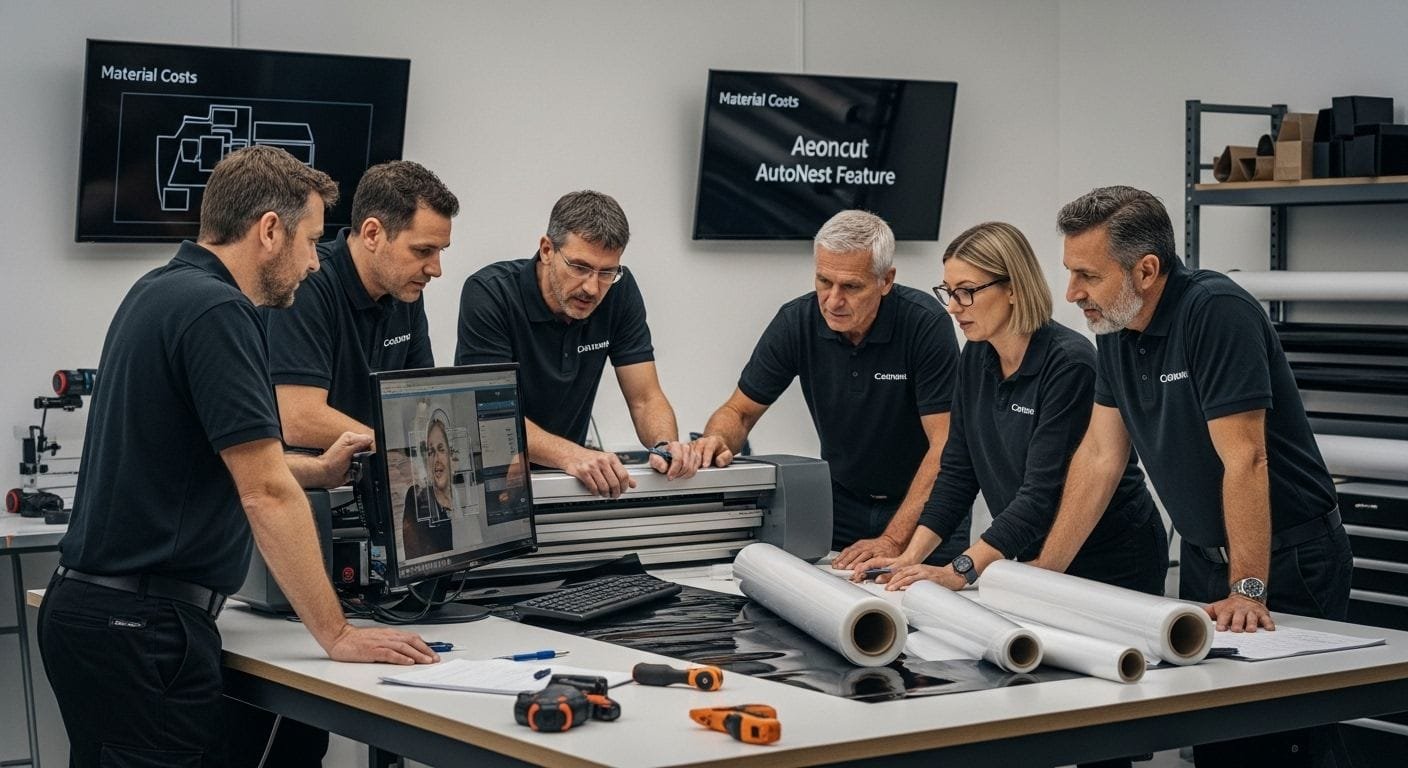
Did you know that businesses with strong communication practices see customer retention rates rise by as much as 89 percent? For vehicle wrap and PPF installers, the difference between satisfied clients and disappointed ones often hinges on more than technical skill. Mastering clear communication, delivering reliable installations, managing time expertly, and embracing the latest tools ensures customers keep coming back and gladly refer others.
Table of Contents
- Understand Customer Needs With Effective Communication
- Deliver Consistent, High-Quality Installations
- Optimize Project Turnaround With Efficient Scheduling
- Implement Feedback Systems To Drive Improvements
- Leverage Technology For Precise And Accurate Results
- Train Staff Regularly On Latest Tools And Techniques
- Offer Flexible Service Plans And Transparent Pricing
Quick Summary
| Takeaway | Explanation |
|---|---|
| 1. Active listening enhances customer relations | Focusing entirely on customers improves understanding and builds trust, leading to meaningful connections. |
| 2. Consistent quality creates customer loyalty | Reliable and precise installations ensure customer satisfaction and encourage repeat business through dependable service. |
| 3. Efficient scheduling enhances satisfaction | Streamlined booking and realistic timelines reduce wait times, improving the overall customer experience. |
| 4. Use technology for precise installations | Advanced digital tools minimize errors and ensure high-quality results, boosting overall service reliability. |
| 5. Transparent pricing builds trust | Clear and flexible service plans help customers make informed choices, increasing their confidence in your business. |
1. Understand Customer Needs with Effective Communication
Communication is the foundation of exceptional customer satisfaction. When you truly listen and understand your clients, you transform interactions from transactional exchanges into meaningful connections.
According to research on active listening, fully concentrating on and understanding a speaker is crucial for accurately identifying customer concerns. This means putting away distractions, focusing intently, and demonstrating genuine interest in what your customer is sharing.
Key Communication Strategies:
- Practice undivided attention during customer interactions
- Ask clarifying questions to confirm understanding
- Reflect back what you have heard to validate comprehension
Effective communication goes beyond simply hearing words. It requires empathy, patience, and a systematic approach to understanding the underlying needs and expectations of your customers. When vehicle wrap or PPF installers take time to deeply comprehend client requirements, they can deliver solutions that exceed expectations.
For professional installers, this means listening not just to what customers want in their vehicle protection or tinting service, but understanding their broader goals. Are they seeking aesthetic enhancement? Protection from environmental damage? Enhanced vehicle resale value? Each motivation requires a nuanced, tailored response.
Pro Tip: Create a standardised consultation process that systematically uncovers customer needs through structured yet conversational questioning. This approach ensures no critical detail is overlooked while making customers feel genuinely heard and respected.
2. Deliver Consistent, High-Quality Installations
Customer satisfaction hinges on the reliability and precision of your vehicle protection film or window tinting installations. Consistently delivering top quality work requires a strategic approach that goes beyond technical skill.
Research indicates that proactive communication strategies play a critical role in ensuring service quality during installations. This means setting clear expectations, communicating potential challenges, and maintaining transparency throughout the process.
Core Elements of Consistent Quality:
- Develop standardised installation procedures
- Invest in continuous training for your team
- Use advanced measurement and precision tools
- Implement rigorous quality control checks
Professional installers understand that consistency is not about perfection but about predictable, reliable outcomes. Every vehicle presents unique challenges, whether you are working on complex curves or challenging surface textures.
To achieve this, consider creating detailed installation checklists that guide your team through each step. These checklists should cover everything from surface preparation to final quality inspection. Documenting your processes helps maintain uniform standards across different projects and team members.
Common Mistakes in PPF Installation and How to Avoid Them can provide additional insights into maintaining high installation quality. By learning from typical errors, you can refine your techniques and prevent potential customer dissatisfaction.
Remember: Customers do not just buy a service. They invest in a promise of quality, protection, and aesthetic enhancement. Meeting this promise consistently is what transforms first time clients into long term advocates for your business.
3. Optimize Project Turnaround with Efficient Scheduling
Time management is the silent hero of exceptional customer service. For vehicle wrap and PPF installers, efficient scheduling can transform your business from good to outstanding.
According to research on customer waiting behavior, understanding and minimizing wait times directly impacts customer satisfaction. This means creating a scheduling system that respects both your workflow and your clients’ expectations.
Strategic Scheduling Principles:
- Implement a digital booking system
- Use realistic time estimates for each project
- Build buffer time between installations
- Prioritize complex jobs during peak performance hours
The key to optimising project turnaround lies in understanding the unique characteristics of each vehicle protection or window tinting job. Not all installations are created equal. A compact car with simple lines will require different scheduling considerations compared to a luxury vehicle with intricate curves.
Technology can be a game changer in this process. Modern scheduling software allows you to track job complexity, technician availability, and precise time requirements. This data driven approach eliminates guesswork and creates predictable workflow patterns.
Proactive communication plays a crucial role. When customers understand realistic timelines and receive regular updates, their perception of waiting time dramatically improves. Heat Shrinking Window Tint: 2025 Guide for Installers can provide additional insights into managing complex installation processes more efficiently.
Remember that efficient scheduling is not just about speed. It is about creating a smooth, transparent experience that makes customers feel valued and respected.
4. Implement Feedback Systems to Drive Improvements
Customer feedback is the compass that guides your business towards continuous improvement. For vehicle protection film and window tinting professionals, creating a robust system for gathering and acting on customer insights is not just beneficial it is essential.
Research on structured customer support conversations highlights that well defined strategies can significantly enhance service improvements. This means moving beyond passive reception of feedback to actively soliciting, analyzing, and implementing customer perspectives.
Effective Feedback Collection Strategies:
- Design clear and concise survey templates
- Offer multiple feedback channels
- Create incentives for customer input
- Follow up on submitted feedback
- Track and categorize improvement suggestions
Reflective listening plays a critical role in this process. According to research, understanding and restating customer feedback helps validate their experience and demonstrates your commitment to continuous improvement. This approach transforms feedback from a mere transaction into a meaningful dialogue.
Professional installers should view each piece of feedback as an opportunity for growth. Whether it is a suggestion about installation techniques, communication style, or overall service quality, every comment carries potential insights for enhancing your business.
Common Mistakes in PPF Installation and How to Avoid Them can provide additional context on how systematic feedback can help you identify and address recurring challenges in your installation process.
Remember: The most successful businesses are not those that never make mistakes but those that learn quickly and adapt continuously based on customer insights.
5. Leverage Technology for Precise and Accurate Results
In the world of vehicle protection film and window tinting, technological precision can make the difference between a good installation and an exceptional one. Technology is no longer a luxury it is a necessity for delivering consistently outstanding results.
Research in natural language processing demonstrates how advanced technologies can dramatically improve accuracy and customer satisfaction. For professional installers, this means embracing digital tools that enhance every aspect of your workflow.
Technology Integration Strategies:
- Invest in advanced cutting software
- Use digital measurement tools
- Implement cloud based pattern libraries
- Adopt AI assisted design technologies
- Automate routine documentation processes
Precise digital tools eliminate human error and create reproducible results. Modern PPF software solutions can analyse vehicle geometry with millimetre precision, ensuring perfect film placement every single time.
Reciprocal teaching methods suggest that AI systems can be trained to become increasingly accurate through iterative learning. This means the more you use advanced technologies, the smarter and more precise they become.
For vehicle wrap professionals, technological leverage means transforming complex installations into streamlined, predictable processes. Digital tools provide real time feedback, comprehensive pattern libraries, and advanced cutting techniques that were unimaginable just a few years ago.
Remember: Technology is not about replacing human skill but amplifying human potential. The most successful installers will be those who strategically integrate these powerful digital tools into their existing expertise.
6. Train Staff Regularly on Latest Tools and Techniques
In the rapidly evolving world of vehicle protection film and window tinting, standing still means falling behind. Continuous staff training is not just a luxury it is a critical business survival strategy.
Active listening and two way communication are fundamental skills that require consistent development. For professional installers, this means creating a learning environment that encourages growth, adaptation, and technological mastery.
Key Training Focus Areas:
- Technical skill enhancement
- Software proficiency
- Latest industry techniques
- Customer communication skills
- Problem solving strategies
The automotive customization industry moves at lightning speed. New film technologies, cutting techniques, and digital tools emerge constantly. How to Train New Installers Using Aeoncut Tutorials can provide structured guidance for keeping your team at the cutting edge.
Effective training goes beyond mere instruction. It is about creating a culture of continuous learning where team members feel empowered to explore, experiment, and expand their capabilities. This means investing not just in training sessions but in creating an environment that values professional development.
Consider implementing regular workshops, online learning platforms, peer mentoring programmes, and hands on training sessions. Encourage your team to share knowledge, discuss challenges, and learn from each other’s experiences.
Remember: Your staff are your most valuable asset. By investing in their growth, you are directly investing in your business’s ability to deliver exceptional customer experiences.
7. Offer Flexible Service Plans and Transparent Pricing
In a competitive automotive protection market, pricing transparency and service flexibility are not optional extras they are essential business strategies. Customers want clear understanding of what they are paying for and the freedom to choose services that match their specific needs.
Research highlights the importance of omnichannel communication and maintaining consistent clarity when designing service plans. This means creating pricing structures that are easy to understand across all customer interaction points.
Pricing and Service Flexibility Principles:
- Create tiered service packages
- Develop clear price breakdowns
- Offer customisable protection options
- Provide transparent cost comparisons
- Include detailed service descriptions
Understanding customer segments is crucial. Different clients have different requirements for vehicle protection film and window tinting. Some might want comprehensive full vehicle coverage while others prefer targeted protection for specific areas.
Window Tint & PPF Combo Services: How to Maximize Profit provides insights into creating service packages that balance customer needs with business profitability.
Transparent pricing means eliminating hidden costs. Provide detailed quotes that break down material costs, labour time, and specific service inclusions. This approach builds trust and helps customers make informed decisions.
Remember: Flexibility is about understanding and adapting to individual customer requirements. The more personalised and clear your service offerings, the more likely customers are to choose and recommend your business.
Below is a comprehensive table summarising the key strategies and elements for improving customer satisfaction and service quality in vehicle protection film and tinting installations.
| Strategy | Implementation | Expected Results |
|---|---|---|
| Effective Communication | Practice active listening, ask clarifying questions, and reflect back comprehension. | Enhanced understanding of customer needs and increased satisfaction. |
| Consistent Quality | Develop standardised procedures, invest in training, use precision tools, and conduct quality checks. | Reliable outcomes and customer trust. |
| Efficient Scheduling | Use digital booking systems, realistic time estimates, and prioritise jobs wisely. | Reduced wait times and improved customer service experience. |
| Feedback Systems | Design surveys, offer multiple channels, incentivise feedback, and follow up on insights. | Continuous improvement and customer-driven service enhancements. |
| Technological Integration | Use advanced software, digital tools, and AI technologies. | Increased precision in installations and higher quality results. |
| Regular Staff Training | Focus on technical skills, software use, and communication. | Up-to-date skills and sustained competitive edge. |
| Flexible Service Plans | Develop tiered packages, clear pricing, and customisable options. | Increased customer engagement and satisfaction with personalised services. |
Elevate Customer Satisfaction with Precision and Efficiency
In the competitive world of vehicle protection film and window tint installation, delivering consistent quality and understanding customer needs are vital. The article highlights pain points such as communication challenges, the necessity for flawless installations, and efficient scheduling—all crucial to improving customer satisfaction quickly. To address these, embracing cutting-edge technology like AEONCUT can drastically reduce errors and streamline workflows. Features such as millimetre-precise patterns and AI-driven auto-nesting empower professionals to meet and exceed client expectations with every job.
Harness the power of advanced cutting software that supports flexibility, transparency, and continuous improvement—concepts that directly reflect the article’s strategies on communication and feedback. By integrating solutions from AEONCUT, installers gain access to extensive pattern libraries, cloud-based updates, and tailored support, enabling them to elevate customer experiences and build loyal client relationships.
Discover how precision tools can transform your installation process today.
Ready to transform your customer satisfaction?

Explore professional-grade cutting software solutions at AEONCUT and take the first step towards flawless, efficient installations. Visit our site now to learn how seamless integration of technology supports your business growth and keeps you ahead in the automotive paint protection industry. Don’t wait—experience the difference that accuracy and innovation bring to your clients’ vehicles.
Frequently Asked Questions
How can I improve customer satisfaction quickly?
To improve customer satisfaction quickly, focus on effective communication, ensuring you understand your customers’ needs. Implement active listening techniques to identify their concerns and modify your services accordingly, aiming for improvements within a few days.
What are some proven strategies for enhancing customer communication?
Proven strategies for enhancing customer communication include practicing undivided attention and asking clarifying questions to ensure understanding. Train your team to reflect on customer feedback which can lead to better service responses within 30 days.
How can I ensure consistent quality in my installations?
To ensure consistent quality, develop standardized processes for all installations and implement rigorous quality control checks. By following a checklist, you can reduce installation errors by approximately 15% within the first few projects.
What steps should I take to optimize project scheduling for better customer satisfaction?
Optimize project scheduling by using a digital booking system that incorporates realistic time estimates and buffer times between jobs. This approach can reduce customer wait times by ~25%, leading to higher satisfaction ratings.
How should I gather and utilize customer feedback effectively?
Collect customer feedback through clear surveys and multiple communication channels. Analyze the responses regularly and implement at least one change based on feedback within each quarter.
What role does training play in improving customer satisfaction?
Training plays a vital role in keeping your team updated on the latest tools and techniques, which can enhance service delivery. Schedule regular training sessions, aiming to provide new skills or updates at least quarterly to maintain high standards.
Recommended
- Window Tint & PPF Combo Services: How to Maximize Profit – AEONCUT PPF Pre-cut Cutting software
- Window Tint & PPF Combo Services: How to Maximize Profit – AEONCUT PPF Pre-cut Cutting software
- Window Tint & PPF Combo Services: How to Maximize Profit – AEONCUT PPF Pre-cut Cutting software
- 25 Competencies That Allow Your Competitors to Outsell You
- 7 Personalized Marketing Ideas for Small Businesses – BizDev Strategy




